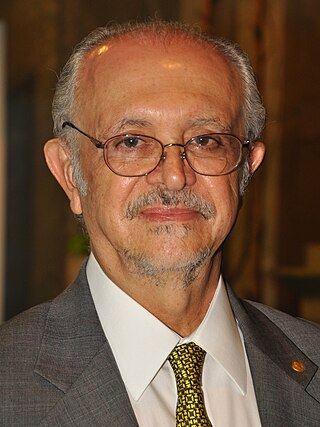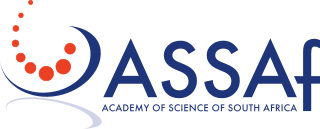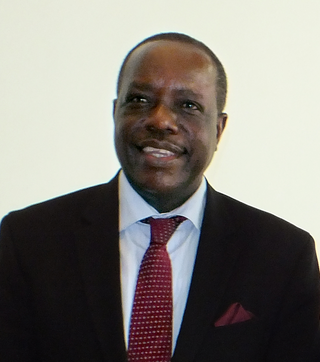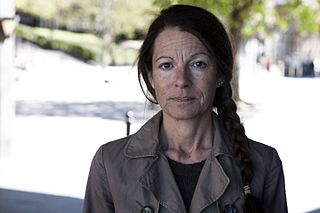Related Research Articles

Mario José Molina-Pasquel Henríquez was a Mexican physical chemist. He played a pivotal role in the discovery of the Antarctic ozone hole, and was a co-recipient of the 1995 Nobel Prize in Chemistry for his role in discovering the threat to the Earth's ozone layer from chlorofluorocarbon (CFC) gases. He was the first Mexican-born scientist to receive a Nobel Prize in Chemistry and the third Mexican-born person to receive a Nobel prize.

Frank Sherwood "Sherry" Rowland was an American Nobel laureate and a professor of chemistry at the University of California, Irvine. His research was on atmospheric chemistry and chemical kinetics. His best-known work was the discovery that chlorofluorocarbons contribute to ozone depletion.

Paul Jozef Crutzen was a Dutch meteorologist and atmospheric chemist. He and Mario Molina and Frank Sherwood Rowland were awarded the Nobel Prize in Chemistry in 1995 for their work on atmospheric chemistry and specifically for his efforts in studying the formation and decomposition of atmospheric ozone. In addition to studying the ozone layer and climate change, he popularized the term Anthropocene to describe a proposed new epoch in the Quaternary period when human actions have a drastic effect on the Earth. He was also amongst the first few scientists to introduce the idea of a nuclear winter to describe the potential climatic effects stemming from large-scale atmospheric pollution including smoke from forest fires, industrial exhausts, and other sources like oil fires.
John Adrian Pyle is a British atmospheric scientist, Director of the Centre for Atmospheric Science in Cambridge, England. He is a Professor in the Department of Chemistry at the University of Cambridge, and since 2007 has held the 1920 Chair of Physical Chemistry in the Chemistry Department. He is also a Fellow of the Royal Society and of St Catharine's College, Cambridge.

Susan Solomon is an American atmospheric chemist, working for most of her career at the National Oceanic and Atmospheric Administration (NOAA). In 2011, Solomon joined the faculty at the Massachusetts Institute of Technology, where she serves as the Ellen Swallow Richards Professor of Atmospheric Chemistry & Climate Science. Solomon, with her colleagues, was the first to propose the chlorofluorocarbon free radical reaction mechanism that is the cause of the Antarctic ozone hole. Her most recent book, Solvable: how we healed the earth, and how we can do it again (2024) focuses on solutions to current problems, as do books by data scientist Hannah Ritchie, marine biologist, Ayana Elizabeth Johnson and climate scientist Katharine Hayhoe.
Richard Elliot Benedick was an American diplomat who was president of the National Council for Science and the Environment. He was an ambassador and was chief United States negotiator to the Montreal Protocol on protection of the ozone layer.

Kalpathi Ramakrishna Ramanathan was an Indian physicist and meteorologist. He was the first Director of Physical Research Laboratory, Ahmedabad. From 1954 to 1957, Ramanathan was President of the International Union of Geodesy and Geophysics (IUGG). Ramanathan was awarded Padma Bhushan in 1965 and Padma Vibhushan in 1976.

The Academy of Science of South Africa (ASSAf) is the national science academy in South Africa. It was started in 1996, and encompasses all fields of scientific work. Its legal foundation is the Academy of Science of South Africa Act, Act 67 of 2001, which came into operation in May 2002.

Sospeter Mwijarubi Muhongo MP is a Tanzanian geologist and a nominated member of the Tanzanian Parliament.
CatherineJ. Murphy is an American chemist and materials scientist, and is the Larry Faulkner Professor of Chemistry at the University of Illinois at Urbana-Champaign (UIUC). The first woman to serve as the head of the department of chemistry at UIUC, Murphy is known for her work on nanomaterials, specifically the seed-mediated synthesis of gold nanorods of controlled aspect ratio. She is a member of the American Association for the Advancement of Science, National Academy of Sciences, and the American Academy of Arts and Sciences in 2019.

The contributions of women in climate change have received increasing attention in the early 21st century. Feedback from women and the issues faced by women have been described as "imperative" by the United Nations and "critical" by the Population Reference Bureau. A report by the World Health Organization concluded that incorporating gender-based analysis would "provide more effective climate change mitigation and adaptation."

Pernilla Wittung-Stafshede is a Swedish biophysical chemist, born in 1968, who is a professor of chemical biology at Chalmers University of Technology in Gothenburg. In 2019 she was named by International Union of Pure and Applied Chemistry as a Distinguished Woman in Chemistry.
Jean Elizabeth Laby was an early Australian atmospheric physicist.
Jane Catherine Ngila is the head of the Chemical Sciences Department at the University of Johannesburg, her work focuses on applying nanotechnology for water purification. She is Acting Executive Director of the African Academy of Sciences and member of the Academy of Science of South Africa.
Professor Patricia Ann Whitelock is a British-born astrophysicist with dual British-South African nationality. She is a Fellow of the Royal Society of South Africa ; a member of the Academy of Science of South Africa; and a member of the South African Institute of Physics (SAIP),.
Michèle Ramsay is a South African Professor of human genetics at the National Health Laboratory Service and the University of the Witwatersrand. Ramsay's research has investigated single-gene disorders, epigenetics, obesity and hypertension. She was the President of the African Society of Human Genetics from 2014 until 2019.

Olanike Kudirat Adeyemo is a Nigerian professor of veterinary public health and preventive medicine at the University of Ibadan. She was inaugural Deputy Vice Chancellor, Research, Innovation and Strategic Partnership, University of Ibadan, from 2017 to 2021. Since July 2023 she has been Secretary to the State Government of Oyo.
Lucy Jane Carpenter is professor of physical chemistry at the University of York and director of the Cape Verde Atmospheric Observatory (CVAO).
Akkihebbal Ramaiah (Ravi) Ravishankara ForMemRS FAAAS FRSC is a scientist specializing in Chemistry and Atmospheric Sciences, and University Distinguished Professor in the Departments of Chemistry and Atmospheric Sciences at Colorado State University, Fort Collins.

Elizabeth Anna Ainsworth is an American plant physiologist currently employed by the United States Department of Agriculture (USDA) Agricultural Research Service (ARS). She also is an adjunct professor of the University of Illinois at Urbana-Champaign (UIUC), a Fellow of the American Association for the Advancement of Science (AAAS) and was awarded the 2018 Crop Science Society of America Presidential Award. She is known for her work concerning the effects of specific atmospheric pollutants, including ozone and carbon dioxide, on the productivity of selected major crops such as corn and soybeans.
References
- ↑ "Roseanne Diab". IAP. Retrieved 31 December 2017.
- ↑ "Who we are". genderinsite.net.
- ↑ "Members". www.assaf.org.za. Retrieved 16 October 2017.
- ↑ "Scopus preview - Scopus - Author details (Diab, Roseanne)". www.scopus.com. Retrieved 30 December 2017.
- 1 2 "Prof. Roseanne Diab". interacademies.org.
- ↑ "Past Office Bearers | ssag".